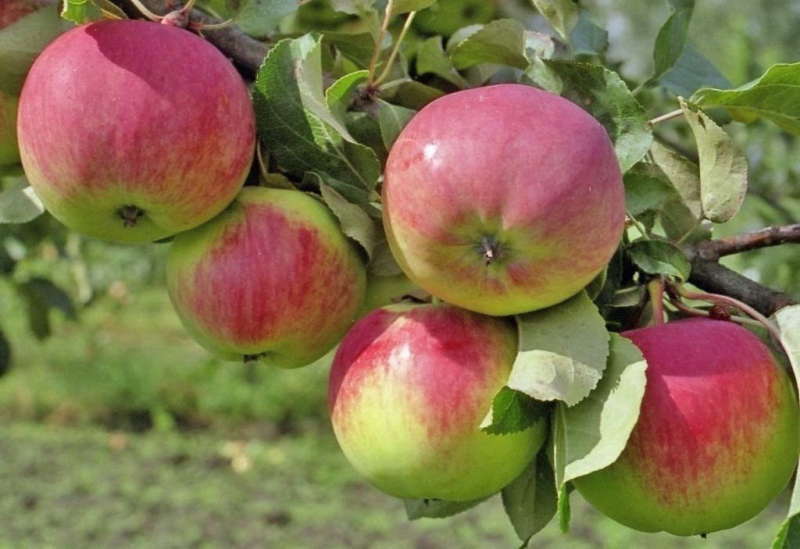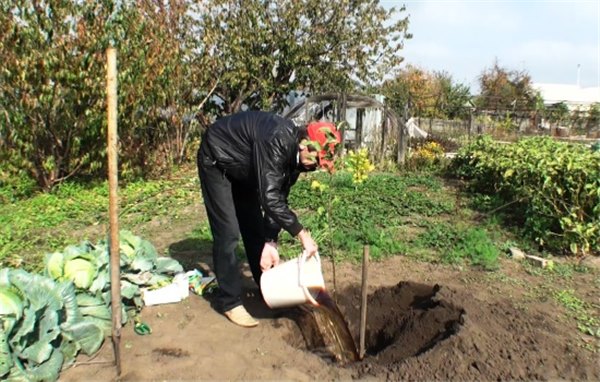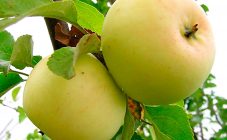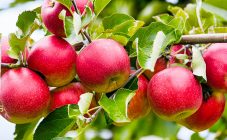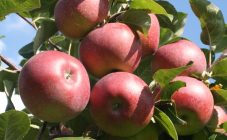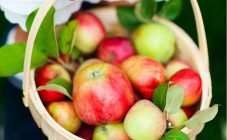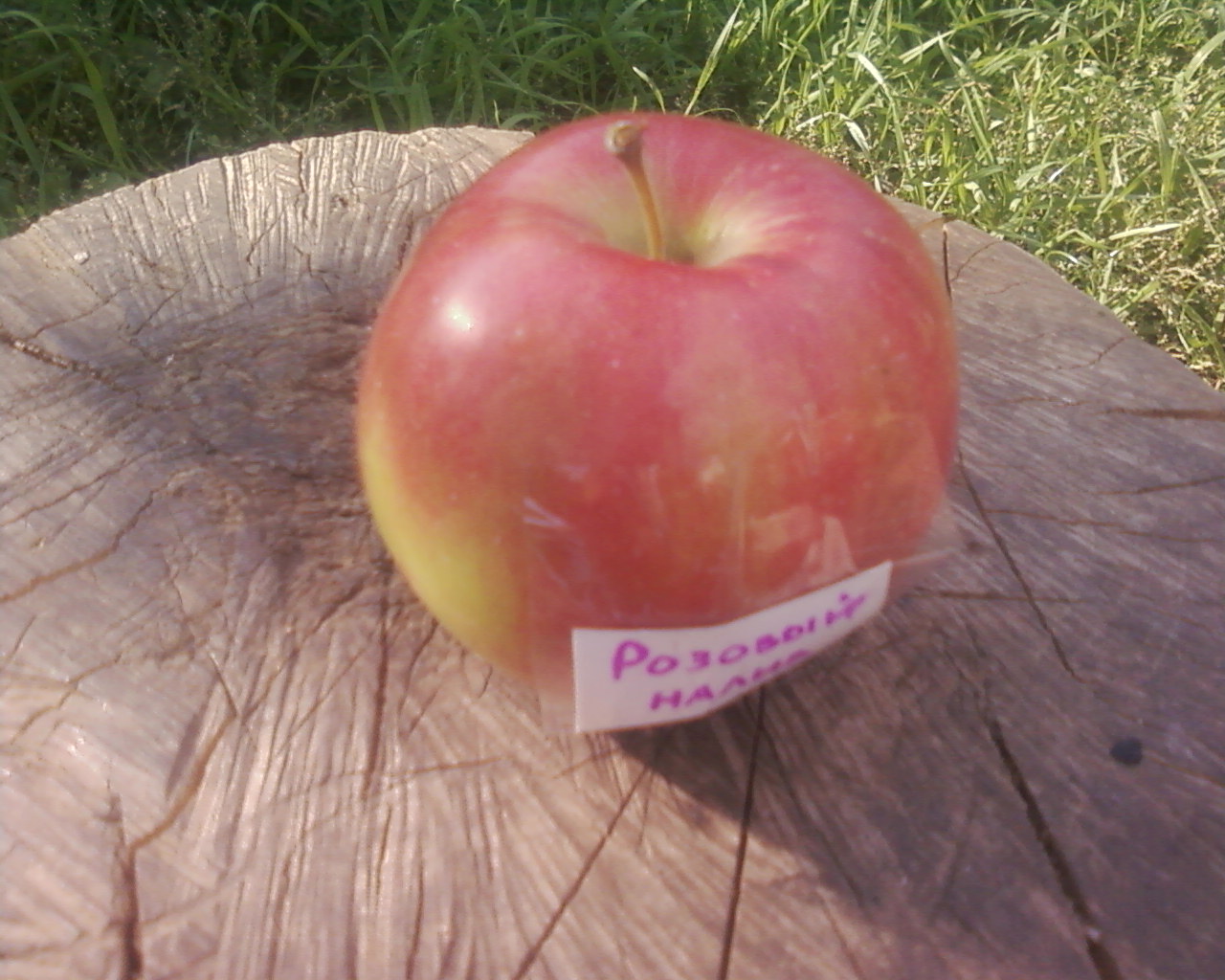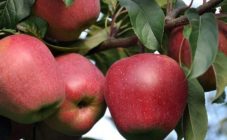Content:
Apple variety Freshness was obtained at the All-Russian Research Institute of Breeding by hybridizing two varieties: Antonovka krasnobochka and Welsey. The result is a tree that is highly scab resistant. The variety is zoned for the Central Black Earth and Central regions. The first fruits were received in 1985, and the state registration of the variety was carried out in 1995 (it was entered in the State Register in 2001). Authors of the development: E. N. Sedov, Z. M. Serova and V. V. Zhdanov.
Apple tree Freshness: description and characteristics of the variety
The tree is of autumn ripening period. Apple tree Freshness grows medium in size (usually 3-4 m), it has good frost resistance. The crown forms quickly and has a round shape without thickening. The main branches have a rather curved shape, departing from the trunk at an acute angle. The bark on the trunk and branches is smooth and brown in color. Life expectancy is about 60 years, but the tree accepts anti-aging pruning well.
The ends of the shoots have a slight pubescence, shiny ovoid leaves with a small-crested edge of a dark green color and slight wrinkling. In spring, flowering is abundant, with corymbose inflorescences of 4-6 pink flowers.
Most of the fragrant fruits are of medium size, only a small part is larger (up to 200 g). The apple is barrel-shaped, regular, slightly flattened. Ripe fruit has a yellowish-greenish skin with small dots, as well as spots and thin stripes of red. The pulp is greenish, dense, very juicy, with a pleasant taste. At the same time, the amount of sugar in ripe apples is small - no more than 10%, so the variety cannot be classified as sweet. Apples ripen at the end of September, so they are harvested at this time. Storage is possible until the end of May.
For planting, it is recommended to purchase 2-3-year-old seedlings that will bear fruit in 2-3 years. Productivity depends on soil fertility and the amount of precipitation in the region during the summer. In arid regions, you will not be able to get a good harvest without watering. The average weight of apples is 150 g. The variety belongs to the technical one, since no more than 30% of the yield has commercial characteristics. One tree with proper care can produce up to 45 kg of apples.
Agrotechnics
The Svezhest variety is cultivated by many orchards to obtain apples, which are processed in the food industry. Juices, jams and other products are made excellent from them. However, gardeners often choose this unpretentious variety for their backyard plots.
Landing dates
It is optimal to plant seedlings in the spring, in the first ten days of April, if the prevailing weather conditions allow. You can also try the autumn planting, but it's much more difficult to guess the time for this. The seedling needs to be given time for rooting, which will be the best guarantee of a favorable wintering.
A site for a new tree is chosen so that groundwater does not run close to the soil surface, this will be detrimental to the root system.
A planting pit is prepared with a size of 1 × 1 m and a depth of 80 cm. A drainage layer is poured onto the bottom, for which broken bricks, fine gravel, expanded clay are suitable.A peg 1.5-2 m high is installed in the center, to which the seedling will be tied. The removed soil is mixed with organic fertilizer (compost, rotted manure), and then used to backfill the roots. It is necessary to monitor the depth of the root collar, which should be located 5 cm above the surface.
In the future, the tree will need regular watering, and to accelerate the adaptation and development of the lush crown, the foliage is sprayed every week with a solution of Epin or Zircon. If several trees are planted, the distances between them are selected, based on a specific variety:
- For seed stocks - 5 m;
- For dwarf rootstocks - 3 m;
- For semi-dwarf rootstocks - 4 m.
Throughout the warm season, a varietal seedling must be watered, and during the period of formation of ovaries and their subsequent ripening, watering is given the utmost attention.
Pruning
The Svezhest variety needs crown formation 3 years after planting. Pruning is usually done in the spring, as soon as warm weather sets in. The purpose of pruning is to remove all branches that grow inside the crown, thickening it. If there are old branches, dried up, broken - they are carefully removed.
You need to refresh the tree, guided by the following rules:
- Each branch is shortened by 1/4 of the growth of the previous year.
- 4-6 buds are left on the side shoots. If the shoot looks weak, only 2-3 buds are left for it.
- Visually assessing the state of the crown after pruning, branches that violate harmony are removed.
Diseases and pests
Apple Trees Freshness is not prone to disease. In particular, due to a special gene, they are not afraid of scab. However, the gardener should be prepared to fight diseases such as fire blight and black cancer. You can and should treat them.
If the trees are not properly cared for, they can develop a fire blight. In this case, only radical removal of the affected part of the tree will help. In this case, the remaining part must be thoroughly disinfected. Young seedlings are susceptible to black cancer. If the disease has entered the soil, then it is quite difficult to fight it. The timely introduction of potash fertilizers for preventive purposes helps.
In addition to diseases, trees are also threatened by various pests. They are fought in the following ways:
- Spraying the crown with dandelion infusion helps well against green aphids.
- Chlorophos solution saves from apple moth. This remedy is the most effective in the fight against this type of insect.
- The leafworm is destroyed if detected with a nitrophene solution.
- Apple flower beetles are scared away with karbofos solution during the flowering period.
Fruiting
Freshness bears fruit within 5 years after planting, but when using 2-3-year-old seedlings, the buyer will receive the first harvest much earlier. Trees bloom in June, and the fruits ripen in the last decade of September. You can store a fresh crop for a very long time, but it is recommended to eat apples within six months after harvesting, since with longer storage they lose their marketability and taste.
Advantages and disadvantages of the variety
Among the most important benefits of freshness apple trees:
- Scab resistance.
- Frost resistance.
- Good keeping quality of fruits (until the end of May).
- High yield (up to 45 kg per tree).
The choice in favor of the apple variety Freshness is made by horticultural farms and private gardeners who want to get a tree with high yields, disease resistance and a long fruiting period. From this point of view, the choice in favor of Freshness is quite justified. However, there is another important aspect that only adds to the attractiveness of the variety. When buying imported seedlings, it is very difficult to predict how they will behave in a given region with its climatic conditions and soil composition. The varieties of domestic selection are 100% predictable, since they have already been zoned and tested in detail over decades of cultivation. If you need a guaranteed result and a bountiful harvest, then the choice of the Svezhest variety is optimal.
